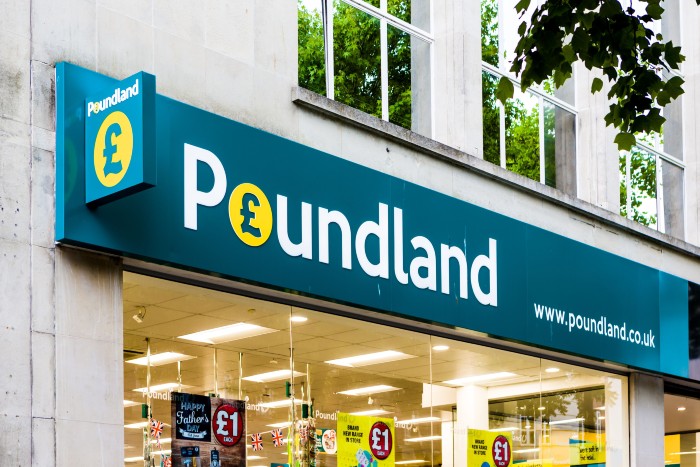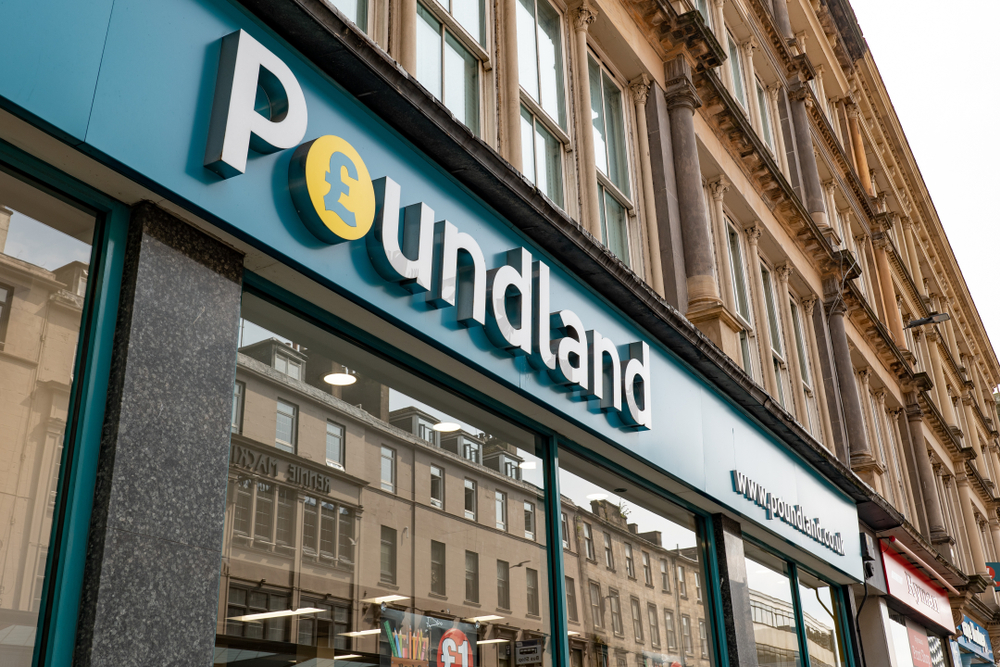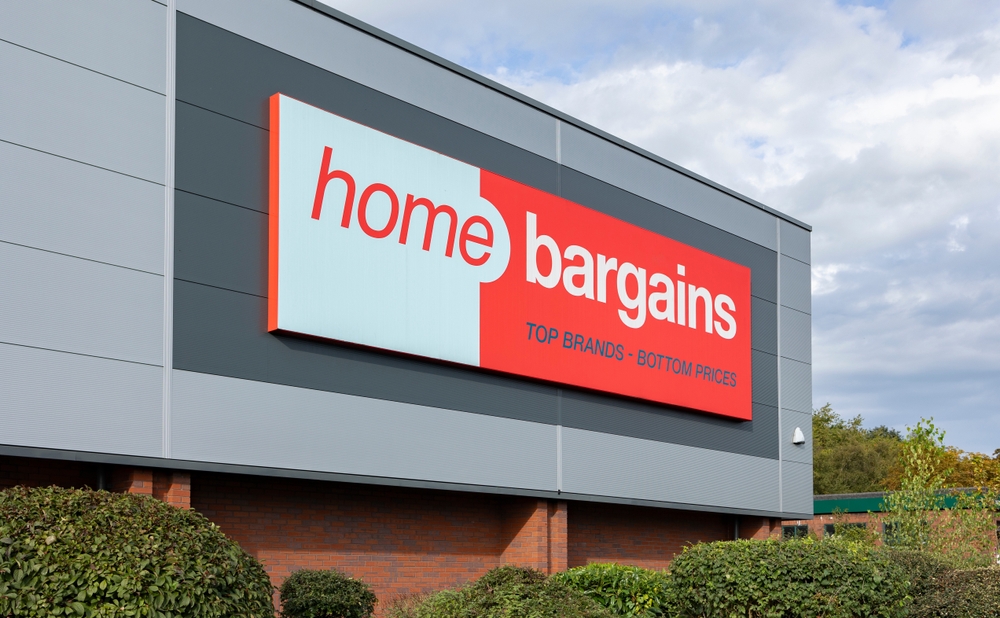The UK is facing the worse cost-of-living crisis in decades and it’s changing how we shop with many consumers already trading down.
Mintel research shows that 28% of consumers have said their personal finances are “tight, struggling, or in trouble” right now.
In this environment, many retailers are preparing for a difficult year ahead. But can the discount retail sector expect an uplift?
CI&T retail strategy director Melissa Minkow believes so. “The combination of consumers feeling extra price-sensitive plus the emptying of so many large stores has paved the way for discount retailers to thrive.”
Just last week Poundland owner Pepco Group reported soaring sales and profits, with like-for-likes accelerating of late at the pound shop. In the eight weeks between March and May, Poundland’s like-for-likes ere up 4.3% on pre-Covid levels.
The retailer flagged the impact of rising inflation in the UK. “The cost-of-living crisis has impacted customers’ disposable income as they scale back even on essential purchases in the short term,” it said.
Fellow discount retail giant B&M recent trading has been significantly ahead of pre-pandemic levels, with UK like-for-likes up 7.7% in April, accelerating to 10.9% in the first three weeks of May. However, it must be noted sales were still behind the boom experienced during the pandemic.
Outgoing boss Simon Arora said: “The retail industry is facing inflationary pressures whilst our customers are having to cope with a significant increase in the cost of living, making spending behaviour in the year ahead difficult to predict.
“However, we have seen before that during such times customers will increasingly seek out value for money, and B&M is ideally placed to serve those needs.”
Stigma-free shopping
The flight to discount retail has been underway for some time.
“It was almost embarrassing to say you shopped at a discounter 10 plus years ago,” Gate One Consulting client director Brian Darby.
That stigma has certainly gone as shoppers have marched en masse to the discounters over the past decade. According to Mintel research, 95% of all shoppers say they now shop, to some degree, at a discounter.

Nielsen head of retail and business insight Mike Watkins says: “People have been shopping at discounters for many years, the market share of discounters in the UK was 4.6% in 2008. Today, it’s 19.6%,” he says.
The continued rise of the discounters can be seen in the amount of new openings by retailers in the sector. B&M plans to open 55 stores in its current financial year, 40 core B&M stores and 15 Heron Foods, while both Home Bargains and The Range are pushing ahead with rapid expansion plans.
Home Bargains owner TJ Morris plans to grow its store numbers from 550 to between 800 and 1,000 stores.
Meanwhile, The Range is set to open 21 new stores this year and owner Chris Dawson is on a mission to fill the gaps left by what he terms “the darlings” of the high street, such as John Lewis and Debenhams.
Discounters do grocery
It’s not just new space that is driving sales at the discounters, it is also the sector’s push into grocery.
Poundland recently extended its frozen food offering to over 30 stores in England and North Wales and, for the first time, in Northern Ireland.
The discount retailer’s latest phase of the rollout – known as Project Diamond Ice – got underway in January with a string of new stores and relocations, from the North East to the South of England.
Poundland retail and transformation director Austin Cooke said at the time: “We know how important chilled and frozen food is to our customers as they seek to manage their spending and make sure everything they buy, gets eaten with as little wastage as possible.”

Poundland is not alone. From B&M to Home Bargains, food is now a big part of the discounters offer.
Watkins says: “Value retail now accounts for 24% of UK grocery sales.”
“It’s a significant change in the retail landscape. The major supermarkets have lost market share to the discounters over the last 10 years.”
The offer is compelling to shoppers and it’s plain to see why. Manchester Evening News compared Tesco’s Clubcard and Aldi Price Match scheme to B&M’s and found that B&M was cheaper for grocery shopping.
Watkins argues that discounters are pushing into food because the food market is an expandable market.
“You can encourage people to buy more of your food and groceries via discount retailers,” he says.
The Big Four are clearly worried and are fighting back against the discounters. Earlier this year, Retail Gazette revealed that Asda had launched a price matching scheme with Home Bargains, vowing to meet its low prices.
The price match covers more than 100 products including brands such as Sure, Surf and Huggies.
Darby argues that supermarkets are under a lot of pressure because customers expect more from them, whereas they can be “forgiving” when it comes to discounters.
“If customers go to an established supermarket, they want products to be available, but they understand a discounter’s business model so they’ll be more forgiving,” he explains.
“Discount retailers have got more flexibility and leniency. Their ultimate aim is to provide a good enough range of lower cost products that might be 50% cheaper, but they’re not 50% worse quality. And that allows the customer to forgive them if their range isn’t perfect.”
However, Mintel retail analyst Piers Butel says the response of the big grocery retailers to the discounter threat over the last couple of years has been “strong”.
“Tesco’s and Sainsbury’s focus on low prices and discounter price matching schemes have helped the retailers fight back and develop a clear value proposition,” he says.
“Their loyalty schemes, in particular the recent update of Tesco’s Clubcard which saw the lowest prices only available to Clubcard holders, have helped these retailers regain customer loyalty.
“Discounters are already working on thin margins and have less room to move here.”
The pressure to keep costs low
Life isn’t all rosey in the world of discounters. Like the rest of the retail industry, they are feeling the pressure of inflation but there is a greater impetus for them to keep prices low. This means margins are coming under pressure.
“We saw last week Pepco Group talking about finding cost-cutting opportunities in its business operations as a way of ensuring that inflation-driven rising costs are not passed on to consumers. This approach is likely to be more common in the discounter sector.”
Meanwhile, B&M’s Arora warned that profits would decline this year. The discounter’s profit margins is expected to fall by between 0.7 and 1.3 percentage points, although it pointed out this is still structurally higher than pre-pandemic levels, with profits expected to be between £550m-£600m, down on the £619m achieved in its last financial year.
The discounters sales may continue to rise but it will be difficult for this to translate to the bottom line.
Nonetheless, the cost-of-living crisis gives the discounters an opportunity to further embed themselves into consumers’ shopping patterns. This can only pay off in the long term.
Click here to sign up to Retail Gazette‘s free daily email newsletter


















